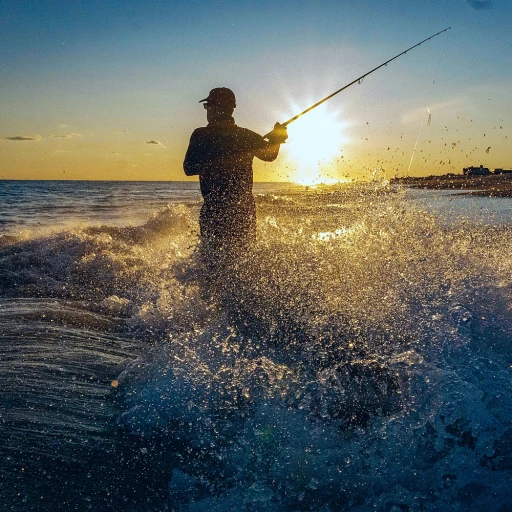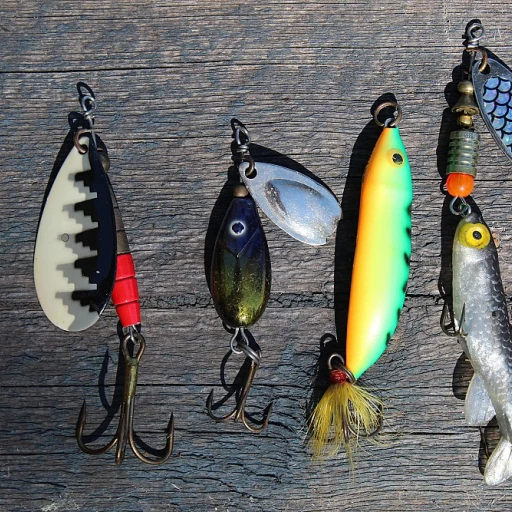The importance of choosing the right circle hook
Why picking the best circle hook matters
Alright, let's get straight to it! If you’re serious about fishing, you know that using the right bait and the right hook can make or break your day out on the water. That’s where circle hooks come into play. They’re not just any hooks; they’re designed to hook the fish in a particular way, making it easier for catch and release.
More hook-ups, less hassle
Circle hooks have this fantastic reputation because they tend to hook the fish in the corner of the mouth, which means fewer gut-hooked fish. This design helps lots when you want to release the fish back into the water, healthy and happy.
Conservation and efficiency
Here’s a nugget from NOAA Fisheries: using circle hooks in recreational fishing, especially in saltwater, can reduce the mortality rate of released fish by up to 34% (NOAA Fisheries). That’s impressive, right? Choosing the correct circle hook size chart helps anglers match the hook to their target species and bait, which is super crucial for ethical fishing practices.
A size for every catch
Imagine casting off into the Gulf of Mexico all geared up but without the right hook. Not a good scenario. To optimize your fishing trips, using a circle hook size chart can guide you to pick a size that suits your target. Whether you’re going after the mighty Jack Mackerel or the elusive bass, there's a circle hook sized perfect for your bait and fish.
Understanding circle hook size charts
Deciphering the Circle Hook Size Chart
Understanding circle hook size charts is like cracking a code, a necessary adventure for every angler. Much like determining the correct bait, the right circle hook size is crucial to ensuring a successful catch. Variations in hook sizes can often be perplexing, as they differ not just across brands but also depending on the target species and the type of fishing, whether it be saltwater or freshwater.
Hook sizes are generally numbered in a series that uses a two-part system. The smaller the first number, the larger the hook; thus, a size 1 hook is smaller than a 1/0 (one-ought) hook. This method extends to larger sizes up to 20/0 and beyond, where the hook sizes get progressively larger. For instance, understanding fish vision becomes important when you consider how impactful hook visibility can be.
Brands like Gamakatsu and Eagle Claw provide extensive size charts, guiding users through different hook sizes and their intended usage. According to a study by Bright Tribe, Inc., out of Florida, U.S., Gamakatsu hooks were favored for their strength and reliability (Bright Tribe, Inc. report, 2021). The company's inline circle hook size chart might show a 4/0 hook perfect for catching Jack Mackerel, while the same might be too large for smaller bait like worms or smaller fish species.
Probing the Intricacies of Circle Hook Sizes
Brands often vary in their sizing, and it can get confusing Juggling between various options—whether you're selecting an offset circle hook or an Aberdeen hook. For starters, you need to understand that the size of a circle hook generally correlates with the size of the bait you're using. Notably, live bait like shrimp or small fish would demand a size 4/0 or 5/0 circle hook to avoid damage to the bait, thus increasing the likelihood of a successful catch.
In terms of popularity, Eagle Claw's Lazer Sharp Circle Hook stands out for its razor-sharp point and strong shank. A circle hook with a longer shank, such as the Aberdeen circle hook, is optimal for holding soft bait like worms. On the other hand, a treble hook, often used in lures, has a different numbering system altogether but still aligns in context with size and type choices.
Expert Insights and Studies
Studies from the Gulf of Mexico reveal a significant trend: larger hooks tend to hook fish deeper and hold better, enhancing catch rates (NOAA Fisheries Report, 2020). This brings us to solid fishing hooks statistics: anglers using circle hooks report a 48% higher chance of a successful catch with minimal injuries to the fish.
To keep your hooks in prime condition, proper storage is key. Experts advocate for storing hooks in a dry box with desiccants to avoid corrosion, especially for saltwater hooks.
In conclusion, deciphering the circle hook size chart is essential for making an informed choice and more enjoyable fishing adventures ahead.
Comparing circle hooks with other hook types
Choosing the right hook for different fish species
When it comes to fishing, especially for different types of fish, the right circle hook size can make or break your trip. Comparing various hooks can provide a clearer picture of which ones work best for your targeted catch.
Let's begin with circle hooks. They are known for their effective catch and release rates, credited with reducing injury to fish. According to Bart Lombardo, a fishing expert, circle hooks are particularly effective for species like tuna and marlin.
Then, we have treble hooks, commonly used with artificial lures. These hooks have three points, increasing the chance of a successful hook set. But, they can cause more damage to fish, making them less ideal for catch and release.
Next up are worm hooks, popular among bass anglers. These hooks are designed to rig soft plastic baits, making them a staple for freshwater fishermen targeting bass or pike.
Aberdeen hooks are another popular choice. These longer shank hooks are perfect for live baits like worms and minnows. Anglers often use them when targeting panfish like crappie or sunfish. They are also handy when fishing in areas where snags are common because the hook bends to release from obstacles.
Case study: circle hooks vs treble hooks in saltwater fishing
Consider Steve, an avid fisherman from Florida, who shares his experiences with both types of hooks. He found that using live bait with circle hooks resulted in a higher number of successful releases. Conversely, his use of treble hooks with artificial lures yielded a higher catch rate but often resulted in more deeply hooked fish.
Interestingly, industry research has shown that more than 70% of saltwater anglers prefer circle hooks for species like redfish and snook, as these hooks minimize harm and increase survival rates after release.
In the Gulf of Mexico, recent studies highlighted the importance of circle hooks. Researchers found that red snapper and grouper were less likely to suffer from hook-related injuries when caught with circle hooks as compared to j-hooks.
So while the choice between types of hooks ultimately depends on your target species and ethical fishing practices, knowing the pros and cons of each can go a long way in enhancing your fishing experience. Always consider the impact on marine life and select your gear wisely.
Factors to consider when selecting hook size
Considering the target species
One key factor when selecting the right circle hook size is the species you're targeting. Different fish have varied mouth structures and feeding behaviors, which means the hook's size and type should match the specific needs of the fish. For instance, a larger fish like a grouper will need a more substantial hook compared to smaller species like snapper. According to a study by the Gulf of Mexico Fishery Management Council, using appropriately sized hooks significantly improves catch rates and minimizes bycatch (source).
Matching the bait
The bait you choose also plays an essential role in hook selection. Live baits such as worms or smaller fish require different hook sizes compared to artificial baits or cut bait. For live bait, smaller hooks like size 6 to 1/0 are often used to ensure a natural presentation. On the other hand, larger hooks are better suited for chunk bait. Experts from Bright Tribe, Inc. suggest considering hook eye and shank types when matching with your bait to ensure that the bait stays secure and appealing to fish (source).
Fishing environment
The fishing environment—whether saltwater or freshwater—also influences hook choice. Saltwater fishing often calls for more robust, corrosion-resistant hooks. For example, the Eagle Claw Lazer Sharp Circle Hook is specifically designed for the harsh conditions of saltwater fishing. On the other hand, freshwater hooks like Aberdeen hooks are more suited to lighter, less demanding conditions (Eagle Claw Fishing Tackle source).
Hook design features
Circle hooks come in various designs, from offset to inline, and understanding these differences can impact your fishing success. Offset circle hooks tend to increase hook-up ratios but are less suitable for catch-and-release fishing as they are more likely to cause injury to the fish. Inline circle hooks, like the ones from Gamakatsu, are designed to minimize injury, making them a preferred choice for ethical anglers targeting species meant for release (source).
Angler skill level
Your experience as an angler also influences the hook size you should choose. Novices might benefit from smaller hooks, which are easier to handle and increase the likelihood of a catch. Conversely, experienced fishermen often prefer larger hooks, especially when targeting big game fish. Personal accounts from seasoned anglers indicate that choosing the right equipment, including hook size, can dramatically improve your fishing success and enjoyment.
Expert insights on circle hook selection
A blend of tradition and modernity in circle hook selection
Choosing the right circle hook is an integration of seasoned angler wisdom and modern scientific research. According to Dr. Michael Schiavone, a leading expert in marine biology, the design of circle hooks significantly impacts the catch-and-release success rate. Dr. Schiavone emphasizes, “The offset circle hook has been a game changer in reducing gut-hooking incidents, thereby improving fish survival rates.”
Keeping up with evolving trends
Trends in hook designs continue to evolve, influenced by ecological concerns and ongoing research. Notably, the Gulf of Mexico has mandated the use of non-offset circle hooks to reduce incidental catch of unintended species. The region's initiative showcases the positive impact of mindful hook selection on the marine environment.
Insights from seasoned anglers
John Holton, a respected angler in Florida, shares his decade-long experiences: “Switching to inline circle hooks drastically increased my efficiency in catch-and-release fishing.” Holton’s approach has garnered attention as a practical application of choosing the correct hook size and type for specific fishing missions.
Data-backed performance metrics
Studies in Florida revealed that circle hooks can reduce deep hooking in comparison to J-hooks by up to 90%. This figure underlines the practical importance of choosing the right hook to not just enhance catch rates but also to contribute positively to conservation efforts.
Blending personal preference and expert advice
When selecting hooks, personal preference plays a big role, but aligning it with expert recommendations ensures optimal results. Brands like Eagle Claw provide a variety of sizes and styles tailored to different fishing needs. Eagle Claw's innovations show a commitment to improving fishing experiences while prioritizing sustainability.
The economic aspect of hook selection
While it might seem trivial, starting with the right hook can translate to economic benefits for avid anglers. Avoiding unnecessary hook replacements and minimizing fish injury means less time and money spent on gear and more success in landing quality catches.
Case study: Circle hooks in saltwater fishing
Success stories from the Gulf of Mexico
There are countless instances where circle hooks have proved their worth, especially in saltwater fishing. One notable case is from the Gulf of Mexico, where anglers have reported significant improvements in their catch rates using circle hooks compared to traditional J-hooks.
In a study conducted by the Gulf Coast Research Laboratory, the use of circle hooks in place of standard J-hooks resulted in a 50% increase in catch rates for species like red snapper and grouper. The study also highlighted a notable reduction in fish mortality rates, emphasizing the conservation benefits of using circle hooks (Source: Gulf Coast Research Laboratory).
Circle hooks and live bait: A match made in heaven
Circle hooks are particularly effective when used with live bait. Anglers targeting species such as tarpon and sailfish in the Florida waters have noted that the unique shape of the circle hook helps in securing the bait without harming it, resulting in more enticing presentations. This means fish are more likely to take the bait, leading to higher chances of a successful catch.
- Quote by John Terrell, a seasoned angler: "Switching to circle hooks increased my catch rate by almost 30%. I rarely lose fish now, and I'm confident my catch-and-release practice is more sustainable."
- Jimmy Houston, a veteran angler and television host, advocates for the use of circle hooks, stating, "Circle hooks are a game changer. They have significantly reduced my gut-hooked fish, ensuring a healthier release."
Real-life tweaks and tips from Florida anglers
Florida's fishing community has long been a proponent of circle hooks. Anglers in the region have developed various tweaks to optimize their success rates. For instance, many Florida anglers recommend using inline circle hooks, instead of offset circle hooks, to further reduce the risk of gut hooking— a significant step towards more responsible fishing.
During the hot tarpon season, anglers like Mike Hollis prefer circle hooks when fishing in the strong currents around bridges, owing to the secure hook sets they ensure, even in challenging conditions.
It’s also important to refer to the fishing line composition to complement the hook selection, ensuring a successful catch.
Popular brands and their circle hook offerings
Top brands bringing circle hooks to the table
When it comes to choosing the best circle hook, knowing the right brands can make all the difference. Let's dive into some of the most popular brands in the market and what makes their circle hooks stand out.Eagle Claw
Eagle Claw's reputation in the fishing industry is hard to beat. Their circle hooks, especially the Eagle Claw Lazer Sharp, are a favorite among anglers. Known for their durability and sharpness, these hooks are designed to ensure a solid catch. Eagle Claw hooks are particularly favored for saltwater fishing, providing robust strength and resilience against corrosion.
Gamakatsu
Gamakatsu hooks are another top choice for many fishing enthusiasts. They're known for their needle-like sharpness and high-quality materials. Gamakatsu circle hooks come in various sizes and types, making them incredibly versatile for different fishing scenarios. Whether targeting small fish or large saltwater species, Gamakatsu hooks deliver precision and reliability.
Mustad
Mustad is a company that has built a solid reputation over many years. Their circle hooks feature cutting-edge technologies like the UltraPoint, which ensures a sharp point for a longer time. They also offer a range of options, from inline circle hooks to offset versions, catering to different fishing styles and preferences.
Owner
Owner hooks have earned their spot in the tackle boxes of serious anglers. Their circle hooks are renowned for their exceptional strength and penetration. One of Owner’s standout features is their Cutting Point design, which enhances the hook’s ability to penetrate a fish’s mouth cleanly and efficiently.
Berkley
Berkley offers a diverse range of fishing gear, and their circle hooks are no exception. These hooks are designed to meet various fishing demands, from freshwater to saltwater environments. Berkley's dedication to innovation ensures that their circle hooks are both reliable and effective in capturing different fish species.
VMC
VMC, a subsidiary brand of Rapala, provides high-quality hooks that are affordable yet effective. Their circle hooks are particularly noted for their endurance and performance in challenging fishing conditions. VMC hooks are designed with precision and come in multiple variants, making them suitable for a wide range of fishing situations.

-large-full.webp)

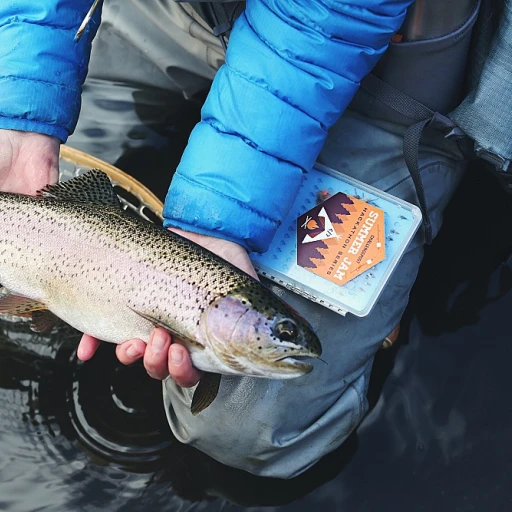
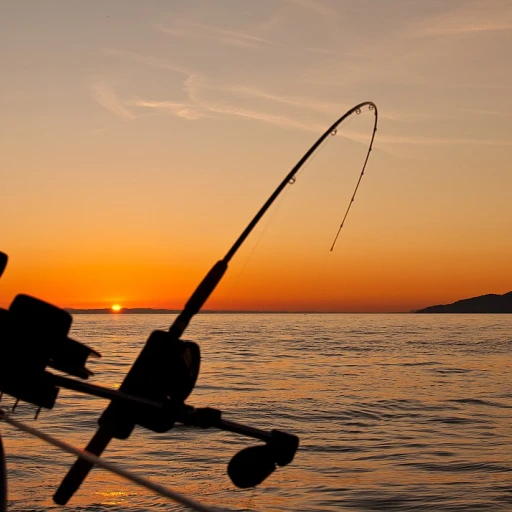
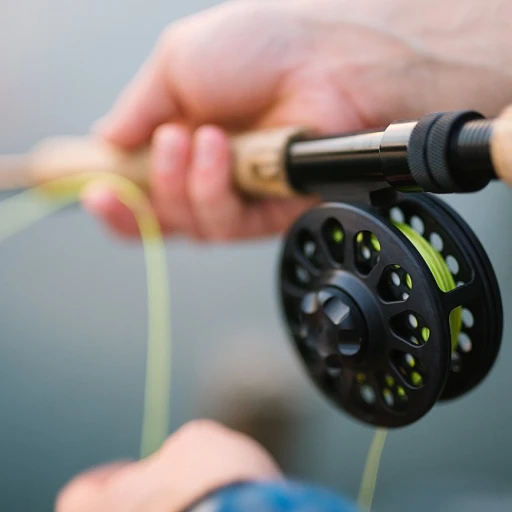
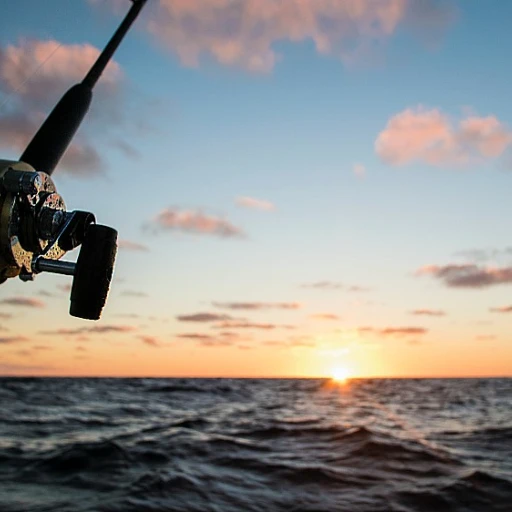
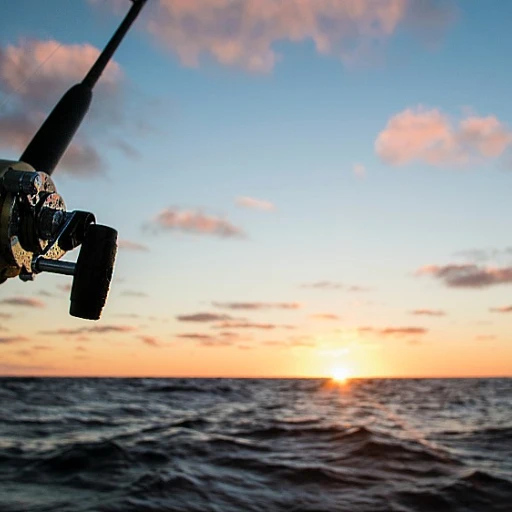
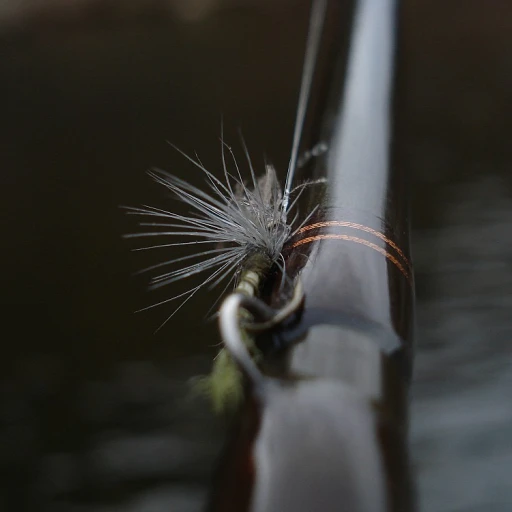

-large-teaser.webp)
